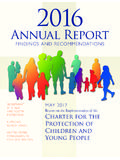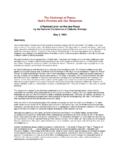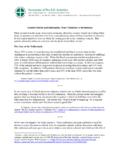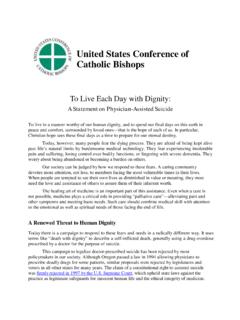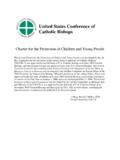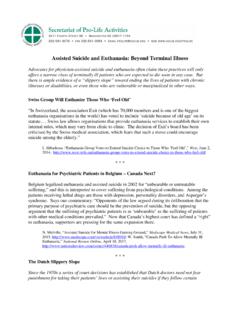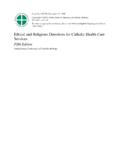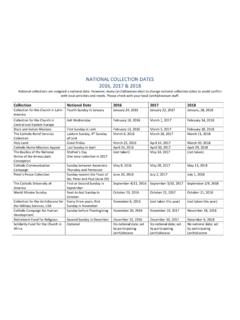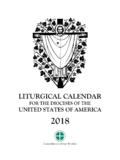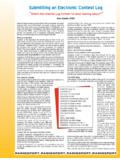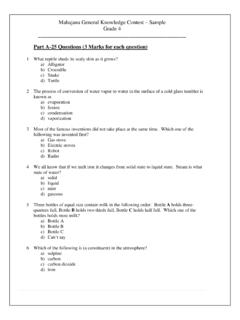Transcription of Contest Packet FOR EDUCATORS
1 A cross-discipline Contest for grades 7-12 Contest Packet FOR EDUCATORS 2019 Contest Theme: A Time to Heal Racism 2 What is this Contest ? The Creating on the Margins Contest is a tool for schools and parishes to engage young people in the Gospel call of Luke 4:18 to bring good news to the poor, liberty to captives, sight to the blind, and freedom to the oppressed. Through the Contest , youth will learn about the efforts of the Catholic Campaign for Human Development (CCHD) to address the root causes of poverty in the United States. CCHD is the domestic anti-poverty program of the United States Conference of Catholic Bishops. You can learn more about CCHD at Through participation in the Contest , students in grades 7-12 can explore poverty or related issues such as racial justice, affordable housing, hunger, or migration in the context of their faith.
2 They will also learn what empowered, low-income persons in their communities are doing to address root causes. Recognizing this connection with local anti-poverty efforts is vital to creating a meaningful understanding of poverty and engaging youth in action to address it. In response to what they have learned, youth are then guided to utilize creative skills to educate peers, family, friends and others about the root causes of poverty, migration or another important issue highlighted in the annual theme. The Contest is designed to be used across disciplines. Entries are evaluated on two components: the creativity of the work and the essay answers submitted with the work to demonstrate proper understanding of how we are called to respond as disciples of Jesus to address poverty in our communities. Youth work can be any medium (video, PowerPoint, short story, painting, poetry, drama, song, or photography).
3 The work must be original and must illustrate the 2019 annual theme, A Time to Heal Racism. The 2019 theme was selected to coincide with the pastoral letter against racism that is anticipated from the usccb in Fall 2018. A national grand prize of $500 will be awarded to a single entry, along with a $500 matching grant to a CCHD funded group working to fight poverty, plus a trip to a national awards event for the winner. One prize per grade level category (7-9 and 10-12) will be awarded for national second ($375) and third ($250) place winners, along with matching grants. Before beginning the Contest , be sure to get in touch with your diocesan contact for the Contest to find out your local deadline and other important information. The annual national deadline is March 31, 2019 but your local deadline may be earlier. Contest rules can be found at: and 3 Youth from a School or Parish Can Participate.
4 It s Easy! 2019 Contest Theme: A Time to Heal Racism Read the Brief Background on Racism. Pray with the Mystical Body of Christ. Learn about Prophetic Witnesses against Racism and How the Church is Responding Today. Explore the Supplemental Resources and the Two Feet of Love in Action. Write about what you learned. Create a Work of Art. Teach others. Submit entries to your local Contest . 4 Today, racism continues to exist in our communities and in our churches. Racism is what makes us see the "other" with suspicion or to attribute negative characteristics to an entire group of people. This evil manifests itself in our individual thoughts, but also in the workings of our society itself. Today's continuing inequalities in education, housing, employment, wealth, and representation in leadership positions are rooted in our country's shameful history of slavery and systemic racism.
5 Systemic Racism Discrimination on the basis of race and ethnicity takes many forms. The United States has made progress in eliminating some of the institutional, legalized racial discrimination of years past: slavery, Jim Crow laws, separate but equal schools, and prohibitions on voting or owning land, to name just a few examples, are gone. These victories were hard fought, and deserve to be remembered and celebrated. But these advances, while substantial, are still incomplete. Data on social and economic welfare show that many persons of color do not have access to the same opportunities as their white counterparts. Unemployment rates for Africans Americans, Latinos, and Native Americans are considerably higher than the national average. Growing income inequality increasingly affects minorities. Among lower- and middle-income households, white families have four times as much wealth as black families and three times as much wealth as Hispanic families.
6 Minority homeownership rates lag behind their white counterparts, and yet research shows that minorities face extra hurdles in getting approved for mortgages. Despite the reality that different racial and ethnic groups commit crimes at roughly the same rates, African Americans, Latinos, and Native Americans are disproportionately affected through every stage of the criminal justice system. Unfortunately, these examples of disparate impact are present throughout the country s social and economic life. Racism in our Communities America remains a deeply divided place in many ways. Too many Americans of all racial and ethnic backgrounds live in technically unsegregated communities, yet, in reality, live in bubbles with few relationships with people of different backgrounds. Many minorities who live in low-income areas experience lack of upward economic mobility due to limited access to opportunity--to quality schools, safe neighborhoods, reliable transportation, or higher-paying jobs.
7 Laws and policies in higher-income communities, such as the non-acceptance of housing vouchers that assist low-income persons with rent, can limit mobility of lower-income persons into these communities. As a result, dialogue and encounter with others with diverse backgrounds, experiences, and opinions can be limited or non-existent as well. Recent violence in communities across the country and the hurtful rhetoric that marks conversations about refugees and migrants, all provide ample evidence that there is still much work to do. As Christians, we are called to constantly examine our own hearts and consciences for how we might contribute to or break down racial divisions, intolerance, and discrimination. The failure to act to end systemic racism hurts those who are victimized and denies all of us the opportunity to benefit from the gifts of diversity.
8 This Packet highlights stories of prophetic witness confronting the evil of racism in the past and shares how the Church continues to address it today. S Brief Background on Racism Today 5 Introduction We will review a Scripture passage, in which St. Paul teaches us that all people are united together through the love and life of Jesus Christ. He uses the image of the body to express how people can be united even if they are different from one another. In this reading, St. Paul emphasizes that the different members of the body all play an essential role. Each part of the body has a distinct function, as well as inherent dignity as part of God s beloved creation. As you listen to this reading, reflect on the way that the Body of Christ today is made up of diverse people, who are all different but are all essential to make the Church healthy and whole.
9 How does the evil of racism frustrate God's design of a diverse but united human family in which everyone is recognized as a valuable and vital member of that family? Reading from Scripture: 1 Corinthians 12: 12-14, 16-21, 24-26 As a body is one though it has many parts, and all the parts of the body, though many, are one body, so also Christ. For in one Spirit we were all baptized into one body, whether Jews or Greeks, slaves or free persons, and we were all given to drink of one Spirit. Now the body is not a single part, but many. If an ear should say, Because I am not an eye I do not belong to the body, it does not for this reason belong any less to the body. If the whole body were an eye, where would the hearing be? If the whole body were hearing, where would the sense of smell be? But as it is, God placed the parts, each one of them, in the body as he intended.
10 If they were all one part, where would the body be? But as it is, there are many parts, yet one body. The eye cannot say to the hand, I do not need you, nor again the head to the feet, I do not need you. But God has so constructed the body as to give greater honor to a part that is without it, so that there may be no division in the body, but that the parts may have the same concern for one another. If [one] part suffers, all the parts suffer with it; if one part is honored, all the parts share its joy. Reflection Saint Paul s letter to the Corinthians calls us to celebrate the differences between the different members of the Body of Christ. Just as a body needs an ear, an arm, and every other part to be healthy and whole, the Church, as the Body of Christ, needs all of its diverse members to be whole. We must ensure the well-being of each of its parts.
